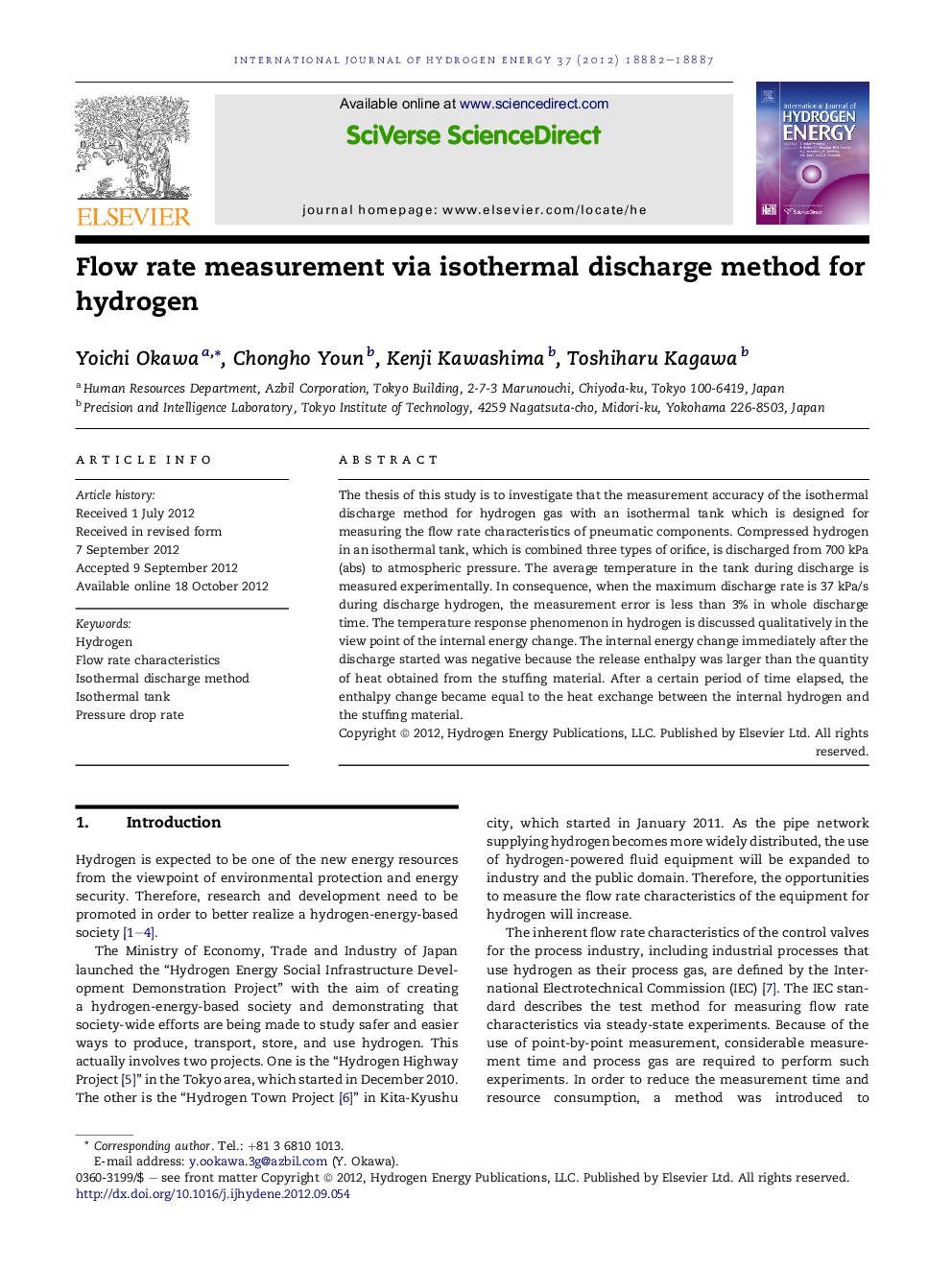| Article ID | Journal | Published Year | Pages | File Type |
|---|---|---|---|---|
| 1276092 | International Journal of Hydrogen Energy | 2012 | 6 Pages |
The thesis of this study is to investigate that the measurement accuracy of the isothermal discharge method for hydrogen gas with an isothermal tank which is designed for measuring the flow rate characteristics of pneumatic components. Compressed hydrogen in an isothermal tank, which is combined three types of orifice, is discharged from 700 kPa (abs) to atmospheric pressure. The average temperature in the tank during discharge is measured experimentally. In consequence, when the maximum discharge rate is 37 kPa/s during discharge hydrogen, the measurement error is less than 3% in whole discharge time. The temperature response phenomenon in hydrogen is discussed qualitatively in the view point of the internal energy change. The internal energy change immediately after the discharge started was negative because the release enthalpy was larger than the quantity of heat obtained from the stuffing material. After a certain period of time elapsed, the enthalpy change became equal to the heat exchange between the internal hydrogen and the stuffing material.
► The measurement accuracy of the isothermal discharge method was investigated. ► The measurement error was within 3.0% when the maximum discharge rate was 37 kPa/s. ► The internal energy change immediately after the discharge started was negative. ► After a period of time, the internal energy change became equal to the heat exchange.
